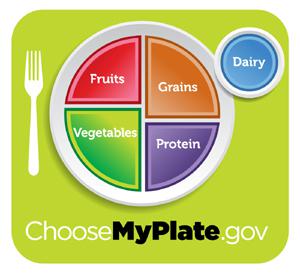

Get Moving, Stay Moving!
May is National Physical Fitness and Sports Month and the goal is simple: Get moving! May is a great time to take a look at your physical activity habits and figure out where you can add in more activity. Most health organizations and doctors agree that 30 minutes of moderate-intensity physical activity most days of the week, for a total of 150 minutes per week, is what people need to stay healthy. What does moderate intensity mean? Basically any activity that gets your heart rate up for a period of time. You should be able to talk while exercising at this level—but not too easily. Brisk walking, swimming and cycling all count as moderate-intensity activities.
Since it is often difficult to start an exercise program and stick with it long term, following these simple steps can help make exercise a habit that will last a lifetime:
• Write out your current habits
• Set physical activity goals that you think you can do
• Find a workout partner so you can help each other
• Make exercise an important part of your weekly schedule
• Plan your exercises ahead of time
• Be patient with your results
Most people think that sweating in a gym is necessary to reach basic fitness levels. Not so. For those who don’t belong to a gym, incorporating simple things like brisk walking in the neighborhood will go a long way to improving health. Weight/resistance training is recommended two days per week but you don’t need a gym or lots of fancy equipment. Do things that use your body for the resistance—such as push-ups and sit-ups. Or you can buy some basic weights or exercise bands to use at home.
The health benefits of regular physical activity cannot be emphasized enough. Exercise prevents
heart disease and some cancers, lowers your risk for diabetes and improves mood and sleep,
among other things.
For more information, visit www.fitness.com.

Help Prevent Illness With Handwashing
Handwashing is easy to do and it's one of the most effective ways to prevent the spread of many types of infection and illness in all settings—from your home and workplace to child care facilities and hospitals. Clean hands can stop germs from spreading from one person to another and throughout an entire community.
When should you wash your hands?
-
Before, during, and after preparing food
-
Before eating food
-
Before and after caring for someone who is sick
-
Before and after treating a cut or wound
-
After using the toilet
-
After changing diapers or cleaning up a child who has used the toilet
-
After blowing your nose, coughing, or sneezing
-
After touching an animal, animal feed, or animal waste
-
After touching garbage
What is the right way to wash your hands?
-
Wet your hands with clean running water (warm or cold) and apply soap.
-
Rub your hands together to make a lather and scrub them well; be sure to scrub the backs of your hands, between your fingers, and under your nails.
-
Continue rubbing your hands for at least 20 seconds. Need a timer? Hum the "Happy Birthday" song from beginning to end twice.
-
Rinse your hands well under running water.
-
Dry your hands using a clean towel or air dry.
Washing hands with soap and water is the best way to reduce the number of germs on them. If soap and water are not available, use an alcohol-based hand sanitizer that contains at least 60% alcohol. Alcohol-based hand sanitizers can quickly reduce the number of germs on hands in some situations, but sanitizers do not eliminate all types of germs.
Hand sanitizers are not effective when hands are visibly dirty.
How should you use hand sanitizer?
-
Apply the product to the palm of one hand.
-
Rub your hands together.
-
Rub the product over all surfaces of your hands and fingers until your hands are dry.
For more information on handwashing, please visit CDC's Handwashing website.

March 30 is National Doctors' Day. The one time each year we recognize the remarkable job our doctors do for so many patients, in so many specialties. Please take this opportunity to let your doctor know how much you appreciate their time, their dedication and their commitment to the health of our community.
In recognition of National Doctors' Day, Missouri Southern Healthcare salutes our medical staff; Gurpreet Boparai, M.D., Reza Jalal, M.D., Zulekha Jalal, M.D., Donald Lamoureaux, D.O., Ly Phan, M.D. and J. Chad White, D.O. We appreciate you!

Celebrating National Nutrition Month
Before you eat, think about what goes on your plate or in your bowl. Foods like vegetables, fruits, whole grains, low-fat dairy products and lean protein foods contain the nutrients you need without too many calories. Over the day, include foods from all the food groups. Try the following tips to “Get Your Plate in Shape.”
While there continue to be many fad diets that claim to help people lose weight and stay healthy, the best approach is to eat a variety of foods from different food groups. Staying away from processed foods is also a good idea. Foods with the fewest number of ingredients are usually the best for you to eat. Here are the top five nutrition tips to stay healthy and prevent disease:
- Eat your fruits and vegetables: Mom was right, fruits and veggies are the keys to a healthy diet. These provide the vitamins, minerals and fiber that are important for good health. Most fruits and vegetables are naturally low in fat and calories. These can help you lose weight and may reduce the risk of cancer and other chronic diseases.
- Eat a variety of lean proteins: Protein is good for providing energy but many cuts of
meat have too much saturated fat, which can lead to heart disease. Choose lean cuts of
beef and poultry and eat more fish—aim for two servings per week. Beans are also a great
low-fat source of protein. - Don’t forget whole grains: Whole grains include wheat, corn, rice, oats and barley. These provide nutrients like fiber and some have been proven to lower cholesterol.
- Choose low-fat or nonfat dairy: Dairy provides much needed calcium but
low-fat options are best. - Avoid too much sodium or added sugars: Too much sodium and sugar is linked to a variety of diseases, including heart disease and diabetes.
So you’ve got the food groups down, but how do you know how much of each one to eat every day?
Here’s what your plate should look like at each meal:
- The first section of the plate is the protein. This should account for ¼ of your plate.
- The second section is grains. This should account for another ¼ of your plate. Make at least half
of your grain choices whole grains. - The other ½ of the plate should consist of fruits and vegetables. Choose a variety.
- Finally, there is a small portion of dairy and this should be low fat or nonfat.
For more information, visit: www.eatright.org. Source: The Academy for Nutrition and Dietetics

